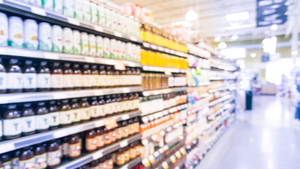Simplifying CO2 refrigeration management with integrated controlsSimplifying CO2 refrigeration management with integrated controls
Supermarket retailers can benefit from CO2 system control networks that deliver smooth performance while simplifying management for end users and technicians.
August 8, 2024

Want to continue viewing?
Complete activation for full access.
Already have an account?
Sponsored Content
Sponsored by Copeland
CO2 refrigeration delivers a winning combination of low global warming potential (GWP), energy efficiency and reliability. Although this makes it an increasingly attractive strategy for food retailers seeking to achieve sustainability goals, CO2 (or refrigerant R-744) has unique performance characteristics that may be unfamiliar to end users and service technicians. Recent advancements in CO2 control technologies are helping to ease this transition by simplifying system ownership, operation and maintenance while helping to ensure optimum performance.
Although an increased reliance on electronic controls may be a new concept to some technicians, it’s becoming a standard part of modern refrigeration system design and emerging refrigerant architectures. This enables each individual piece of the control ecosystem to work together, simplifying the startup, management and tuning of CO2 booster systems. Many system functions can be automated, supporting hands-off operation on a day-to-day basis, while manual controls allow technicians to make critical system changes when needed.
In addition to sustainability and energy optimization benefits, control system integration helps to preserve food quality and safety, limit unnecessary maintenance calls, prevent failures, and streamline issue resolution. To get the most from this strategy, however, it’s important to understand each of the key components of a CO2 booster control ecosystem, including:
- System supervisory control
- High-pressure regulation and control
- Built-in capacity controls and compressor diagnostics
- Case controllers
- Leak detection sensors and devices
This white paper provides an overview of these components and the important role each one plays in a connected network. You’ll also learn about the benefits a complete control system integration delivers and how it can help food retailers meet their sustainability goals, both in individual stores and across an enterprise.
You May Also Like




